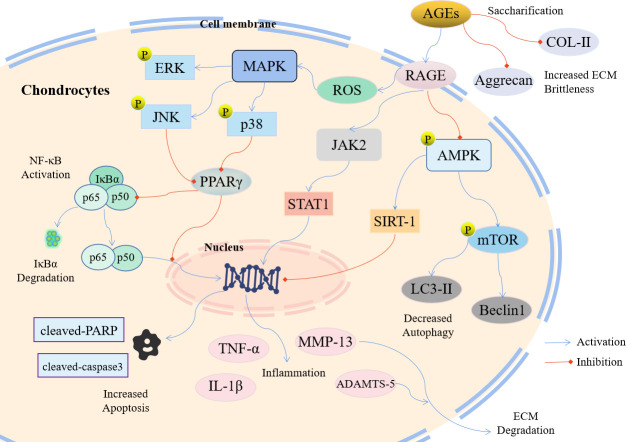Fig. 2.
Molecular schematic diagram of the involvement of advanced glycation end products (AGEs) in the pathogenesis of osteoarthritis (OA). Extracellular matrix (ECM) degradation, chondrocyte apoptosis, and autophagy play important roles in the occurrence and development of OA. Red arrows indicate inhibition, and blue arrows indicate activation. ADAMTS, A Disintegrin and Metalloproteinase with Thrombospondin motifs; AMPK, adenosine 5‘-monophosphate (AMP)-activated protein kinase; COL-II, type II collagen; ERK, extracellular regulated protein kinases; IκBα, inhibitor of NF-κB; IL-1β, interleukin-1β; JAK2, janus kinase 2; JNK, c-Jun N-terminal kinase; LC3-II, light chain 3B; MAPK, mitogen-activated protein kinase; MMP-13, matrix metalloproteinase 13; mTOR, mammalian target of rapamycin; NF-κB, nuclear factor-κB; p38, p38 mitogen-activated protein kinase; PARP, poly ADP-ribose polymerase; PPARγ, peroxisome proliferator-activated receptor γ; RAGE, receptor for AGEs; ROS, reactive oxygen species; SIRT-1, sirtuin 1; STAT1, signal transducer and activator of transcription 1; TNF-α, tumour necrosis factor α.

